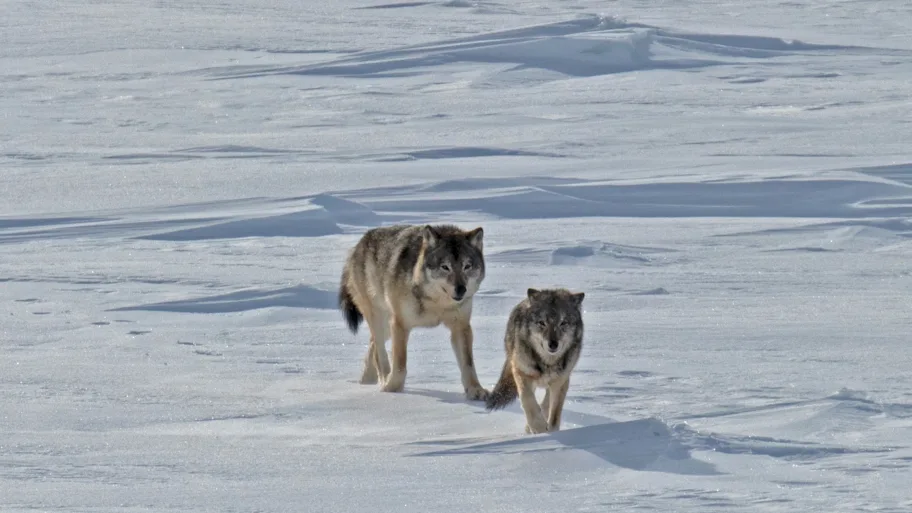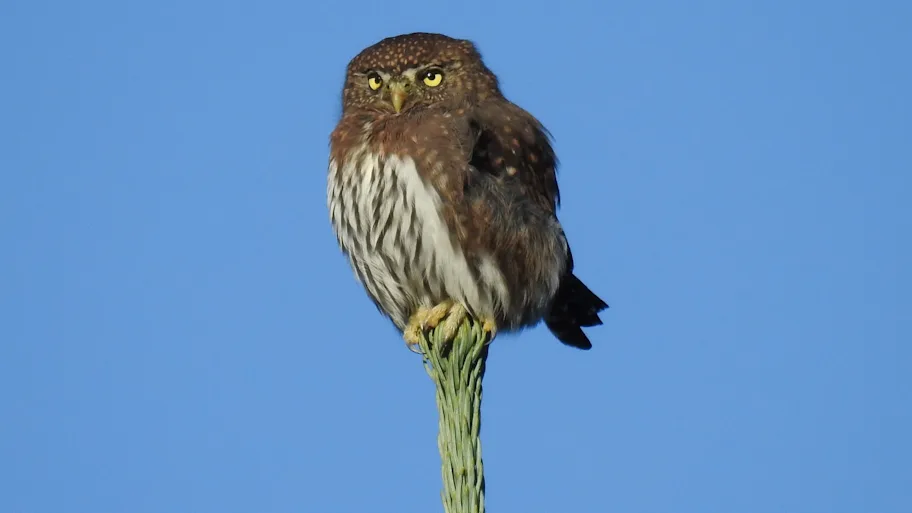
- Science News
- Featured news
- Peregrine falcons set off false alarms to make prey easier to catch
Peregrine falcons set off false alarms to make prey easier to catch
by Angharad Brewer Gillham, Frontiers science writer

Image: US Fish and Wildlife Service Pacific Southwest Region, public domain
Can clever predators manipulate prey into taking bigger risks, making them easier to hunt? Scientists have found that, by carrying out attacks which force Pacific dunlins into exhausting evasive maneuvers, peregrine falcons increase the likelihood of successfully hunting those dunlins later. The prey birds are tired out or forced to forage at more dangerous times.
Predators must eat to survive — and to survive, prey must avoid being eaten. One theory, the Wolf-Mangel model, suggests predators could use false attacks to tire prey out or force them to take bigger risks, but this has been hard to show in practice. Now, scientists observing peregrine falcons have found evidence that they deliberately exhaust their prey to improve later hunting success.
“Although predators are imagined as clever in novels and movies, like the velociraptors in Jurassic Park, empirical biologists are generally not inclined to give much credence to such ideas,” said Dr Ronald Ydenberg of Simon Fraser University, lead author of the study in Frontiers in Ethology. “I have often been puzzled when watching raptors by aspects of their behavior, such as prominent perching or otherwise making evident that they are present. The theoretical paper by Wolf and Mangel offered an explanation.”
On the wing
Pacific dunlins spend their winters in large flocks on temperate mudflats, like Boundary Bay in British Columbia, Canada. The peregrine falcons that hunt them find hunting easier when the tide drives the dunlins closer to land, because dunlins usually roost at high tide and the shore vegetation makes it easier to ambush them.
However, during the 1990s, the presence of peregrine falcons increased at Boundary Bay, and the dunlins began to replace roosting with over-ocean flocking — flying as a group over the waves. This stops the peregrines ambushing them but costs energy and foraging time.
The Wolf-Mangel model suggests that hungry prey will invest more effort in foraging than avoiding predators, and that predators can exploit this. Ydenberg and his colleagues sought to test this, using decades of data provided by Dr Dick Dekker, to whom the study is dedicated on his 90th birthday.
“I first worked with Dick in 2003,” said Ydenberg. “He was an independent, self-financed scientist with an obsessive interest in watching peregrines that started as a teenager. There was just no other source in the world for the sort of information he collected.”
Download original article (pdf)
Flocking to safety
Peregrines could use false attacks to make dunlins flock, but even experienced observers cannot be sure which attacks are serious. So the researchers looked at the dunlins’ behavior instead.
The scientists watched them from dawn to dusk for 34 days and analyzed a six-hour period centering on high tide. They also drew on 151 days of data recording peregrine attacks, to estimate the risk of predation at different times of day.
If dunlins flocked over the ocean — which they did on 68% of observation days — they did so for about three hours a day. They did not flock when conditions made it energetically costlier or when there were other safe options. They also did not flock at night, when falcons don’t hunt.
Trying out tactics or trying their luck?
The hunting data showed that dunlins were at greatest risk of predation just before and just after high tide, and spent most of the riskiest period flocking. However, there was a sharp increase in kills two hours after high tide, because the dunlins were not flocking despite elevated risk.
Over-ocean flocking reduces the risk to the dunlins, whereas high tide improves the peregrines’ chances. Dunlins should wait to flock — optimizing their flocking could reduce mortality by up to 45% — but they don’t, because the peregrines are a threat. By provoking the dunlins into flocking early, the peregrines deprive them of opportunities to forage and the energy they need to continue flocking later in the day.
The scientists considered whether more skilled peregrines wait until the dunlins are tired to hunt, but could not test this. However, they did find that a different species of bird in a different bay also flocks when threatened by peregrines. The same pattern of early flocking and later kills appears, suggesting that this is down to a hunting strategy rather than variations in skill.
“There are other hypotheses that might explain these results. Testing those requires detailed tracking of individual peregrines,” cautioned Ydenberg. “That doesn’t seem feasible in this system, but as the basic ideas should apply more widely testing could happen in other systems.”
REPUBLISHING GUIDELINES: Open access and sharing research is part of Frontiers’ mission. Unless otherwise noted, you can republish articles posted in the Frontiers news site — as long as you include a link back to the original research. Selling the articles is not allowed.






